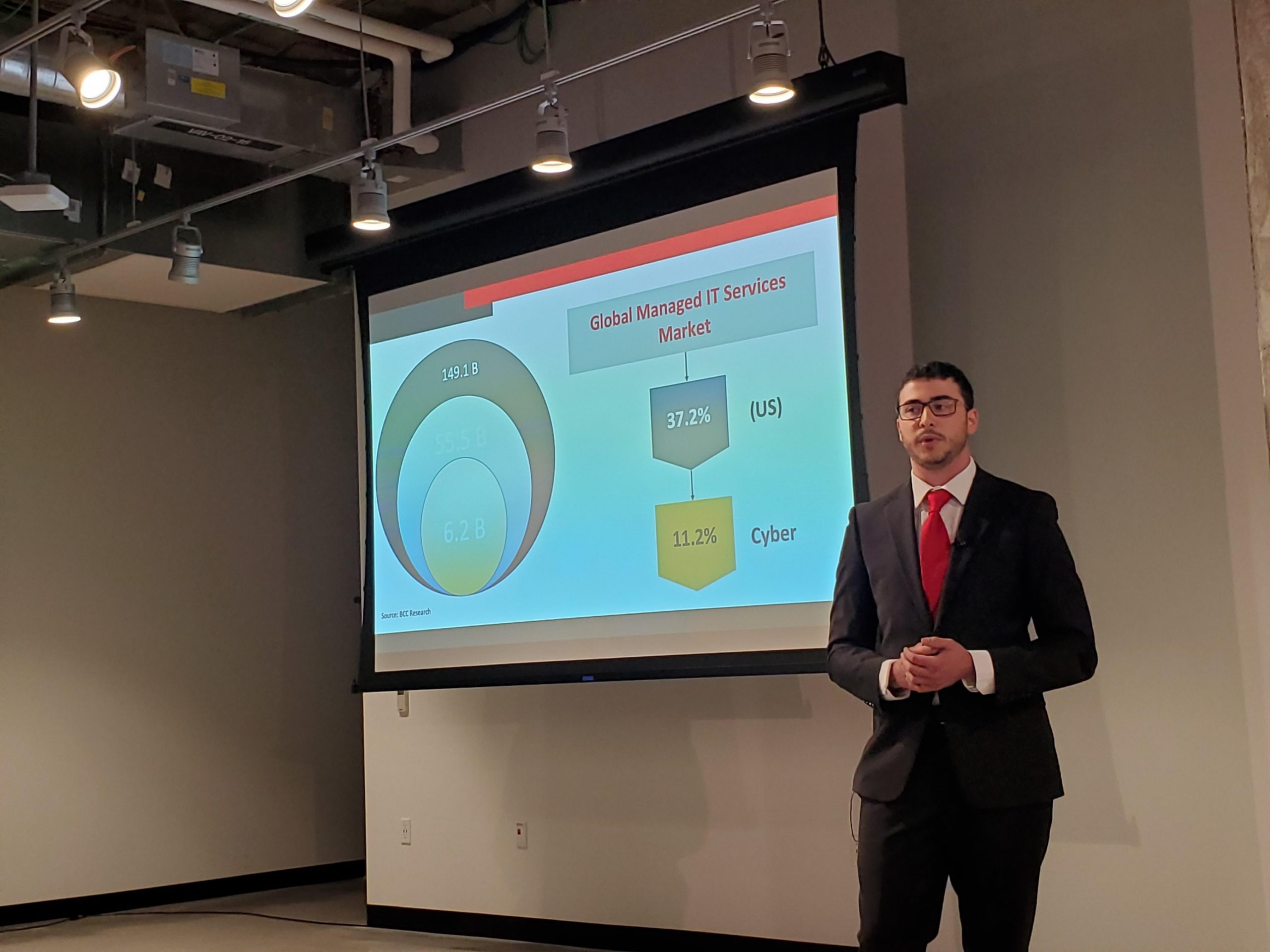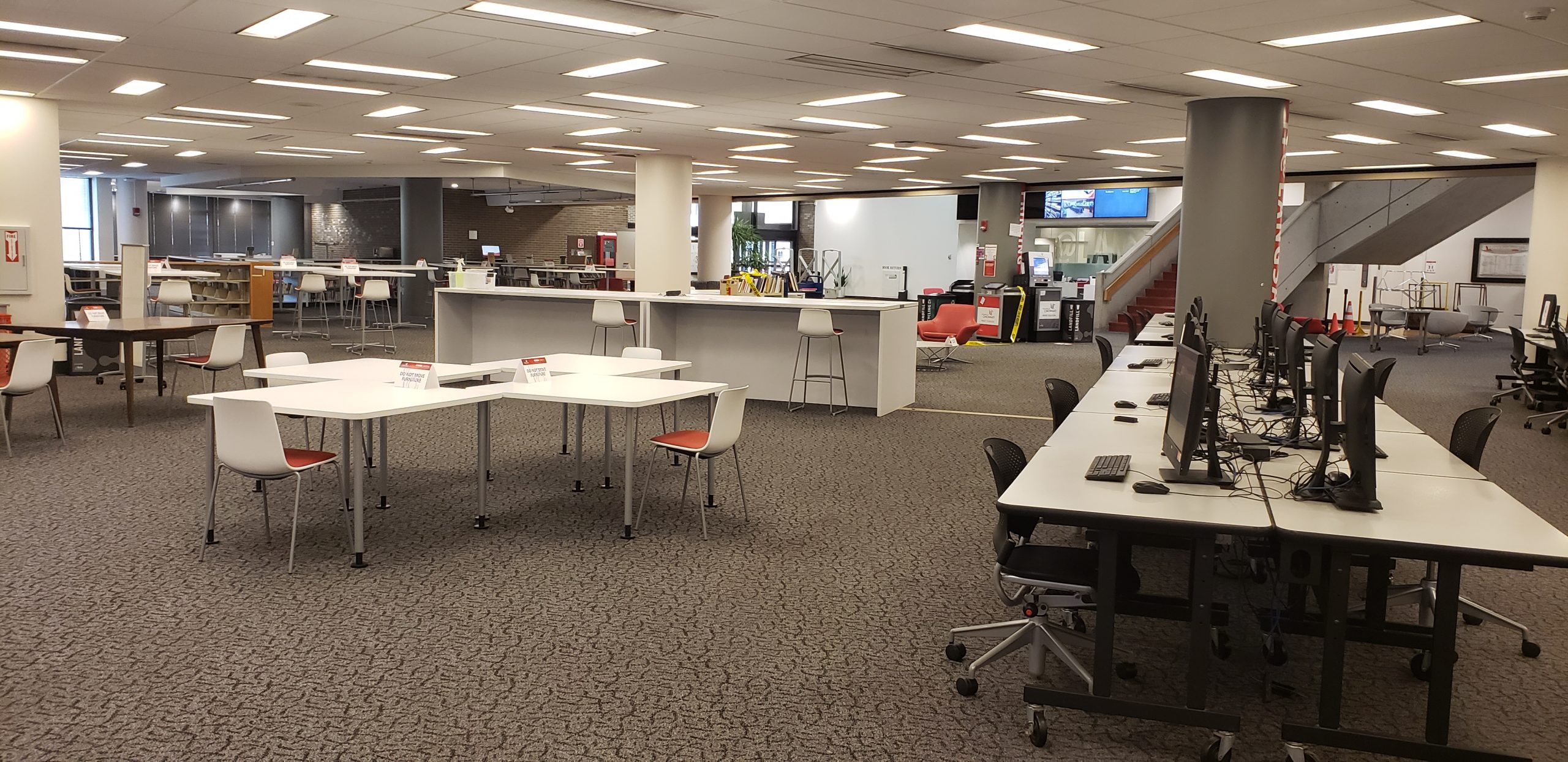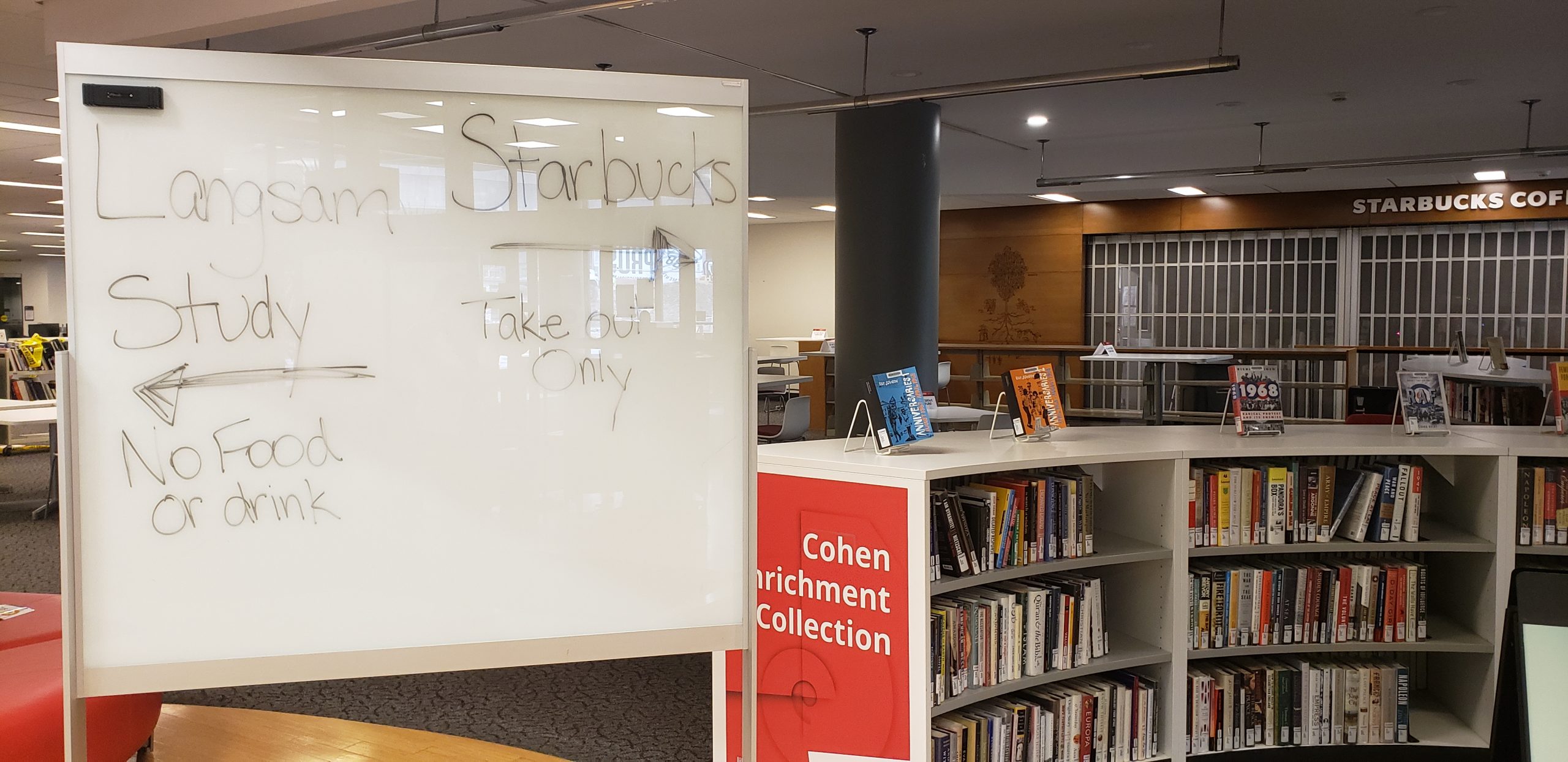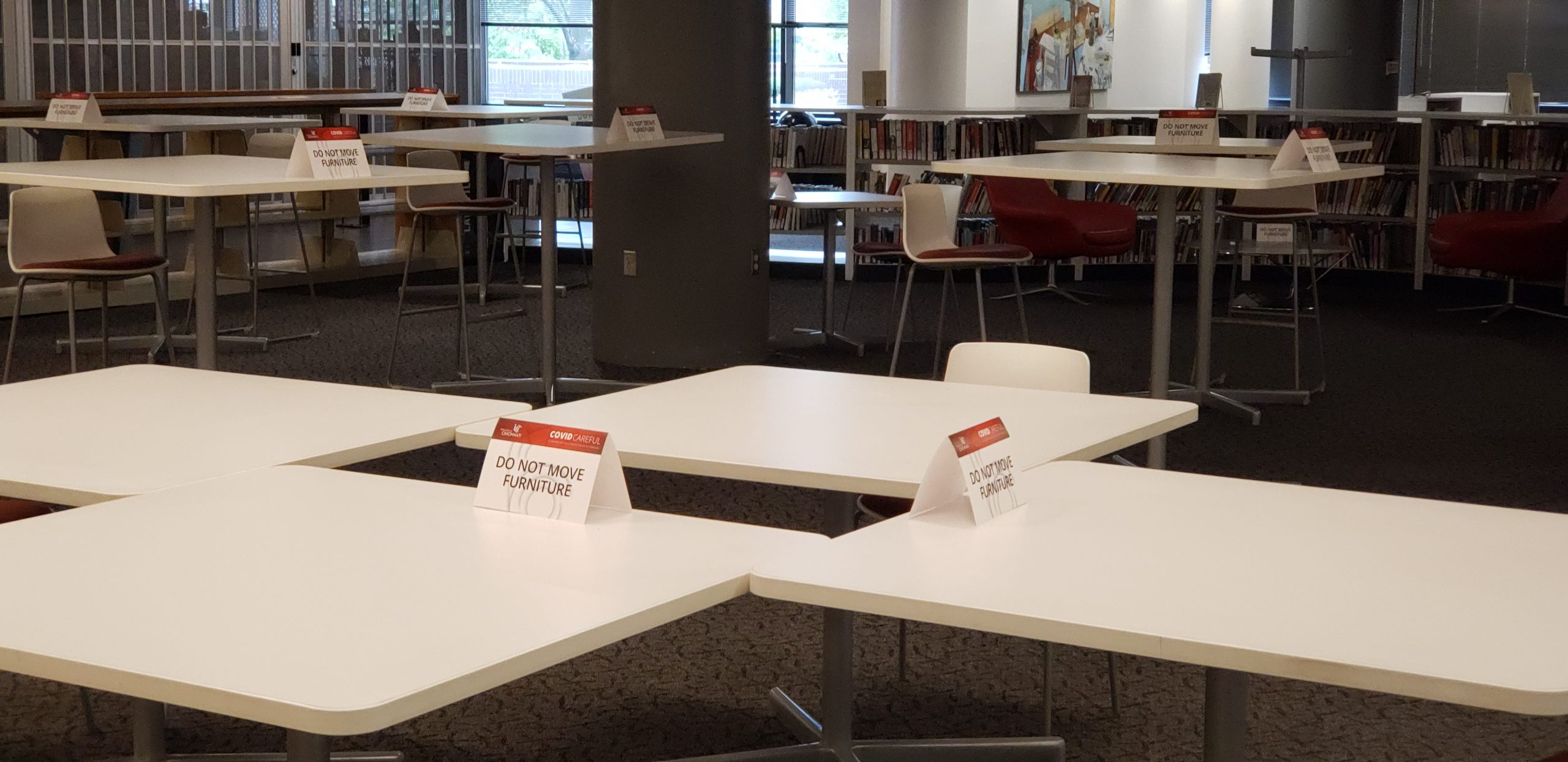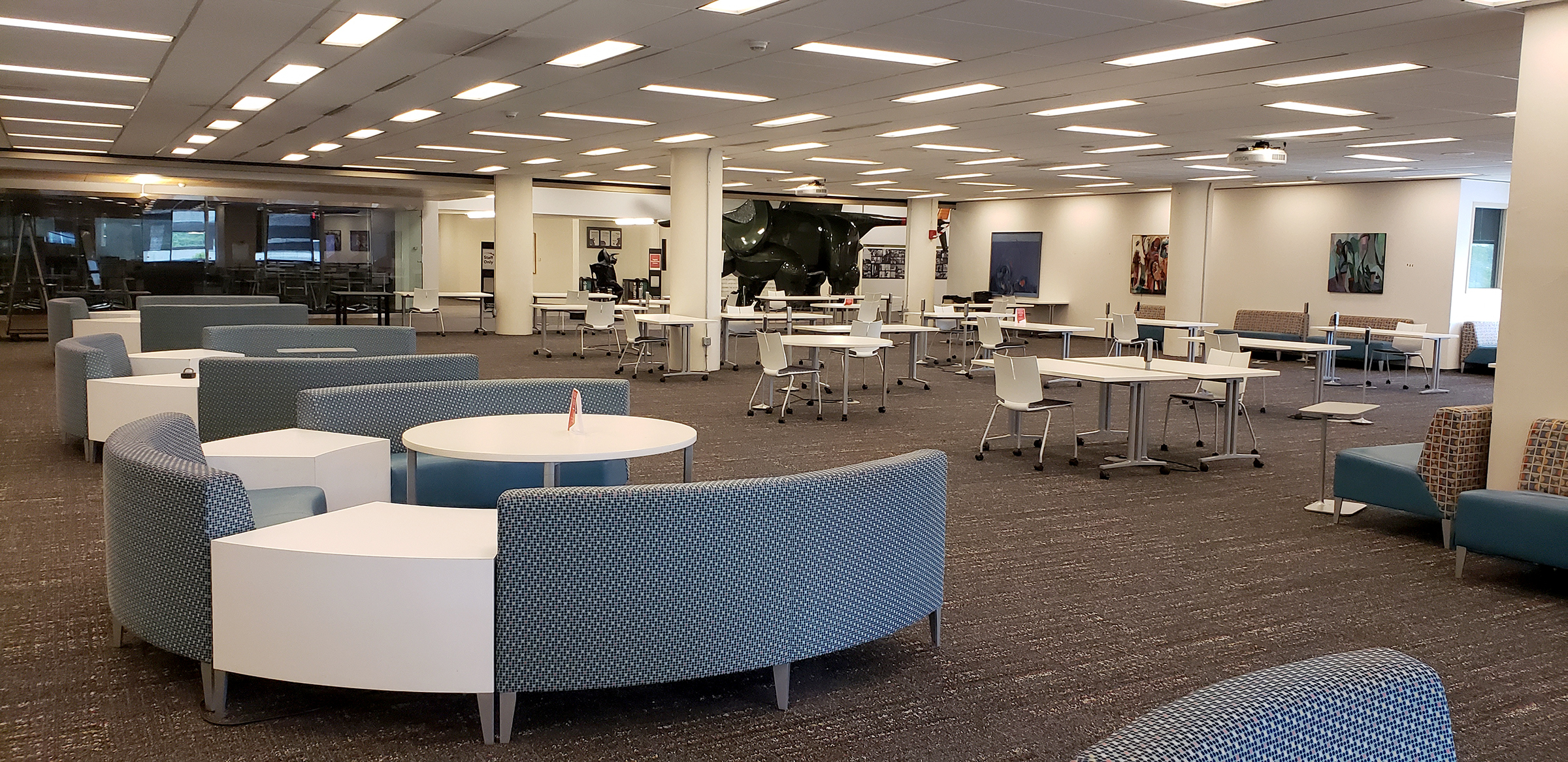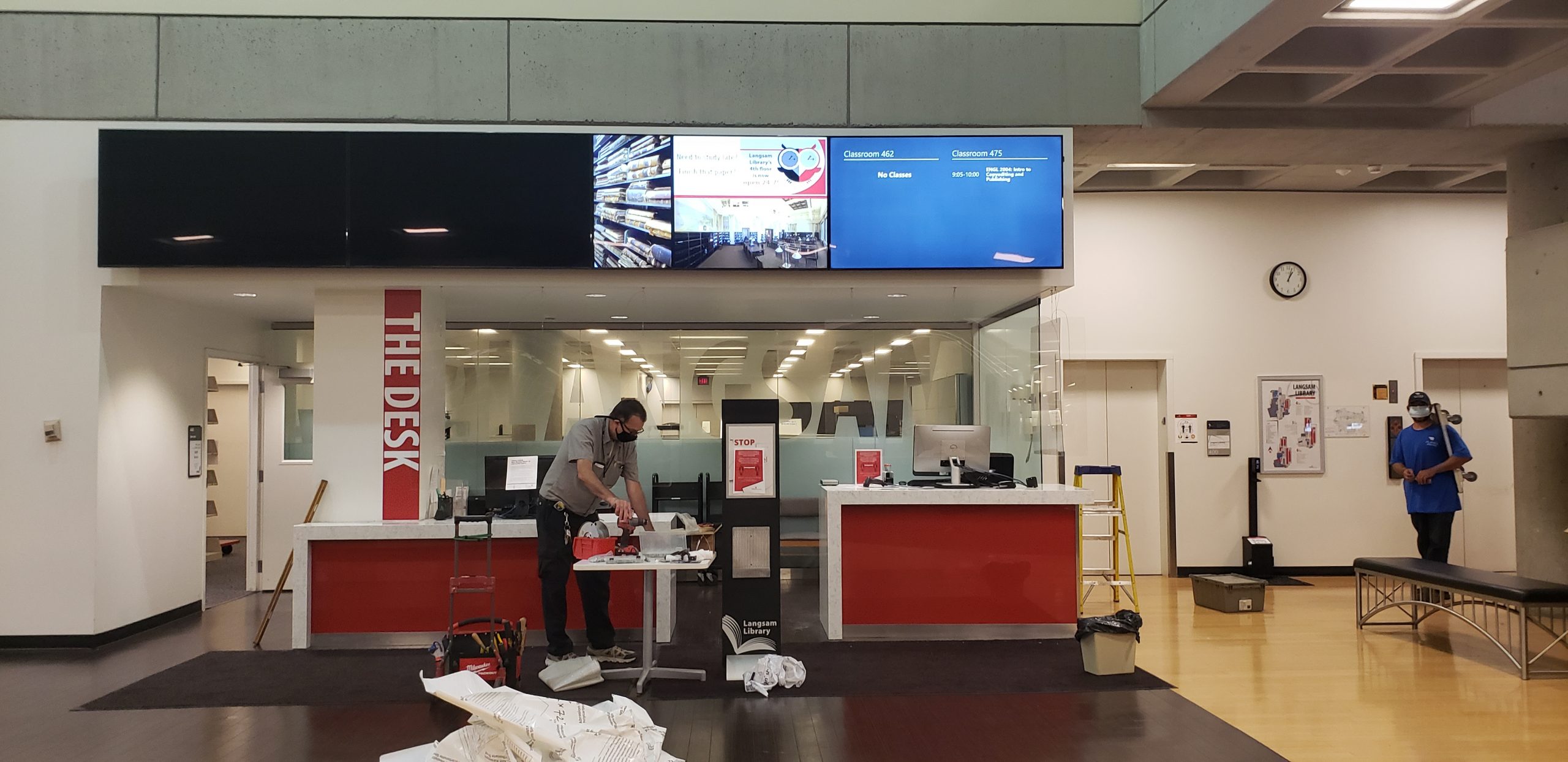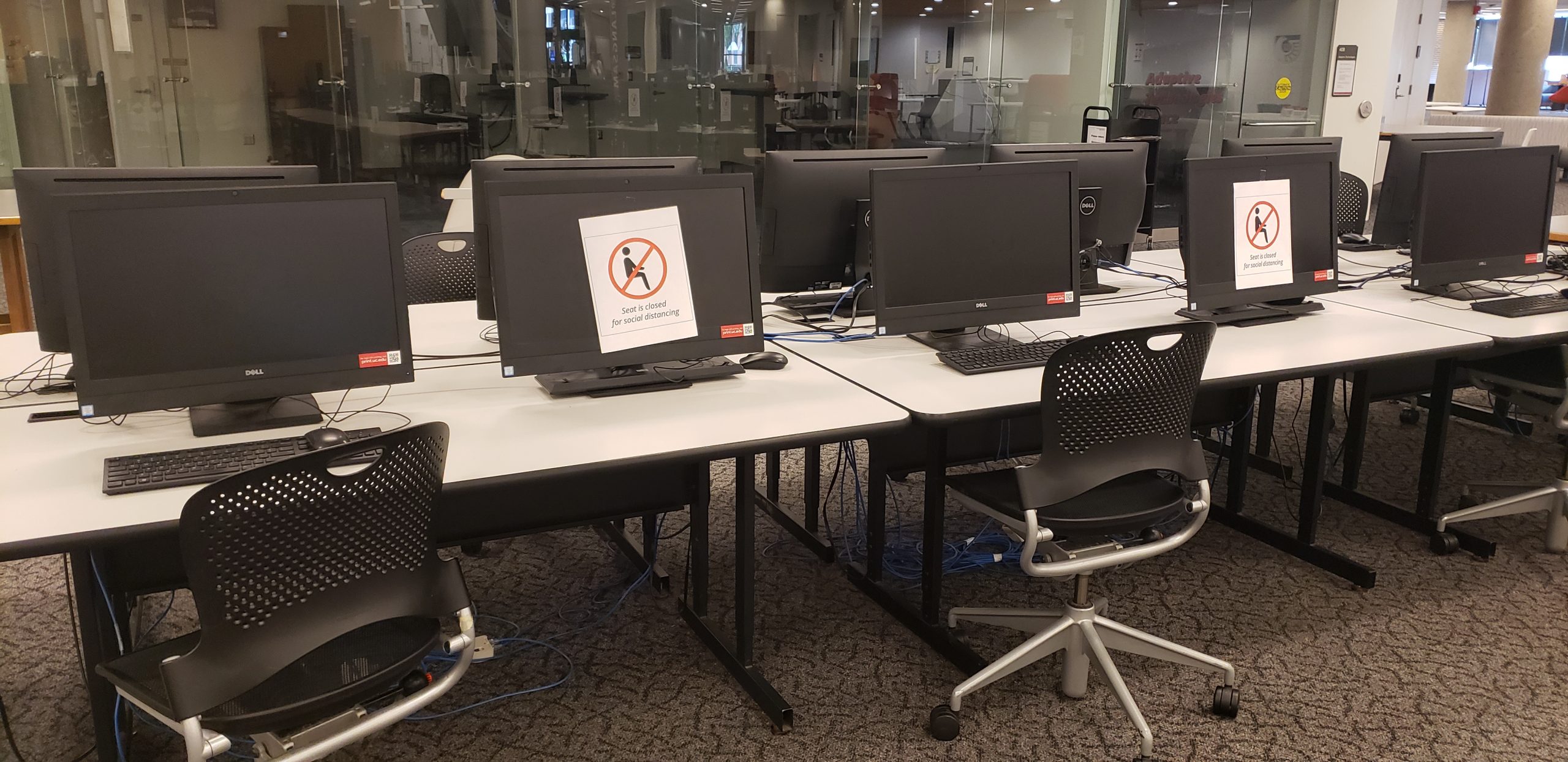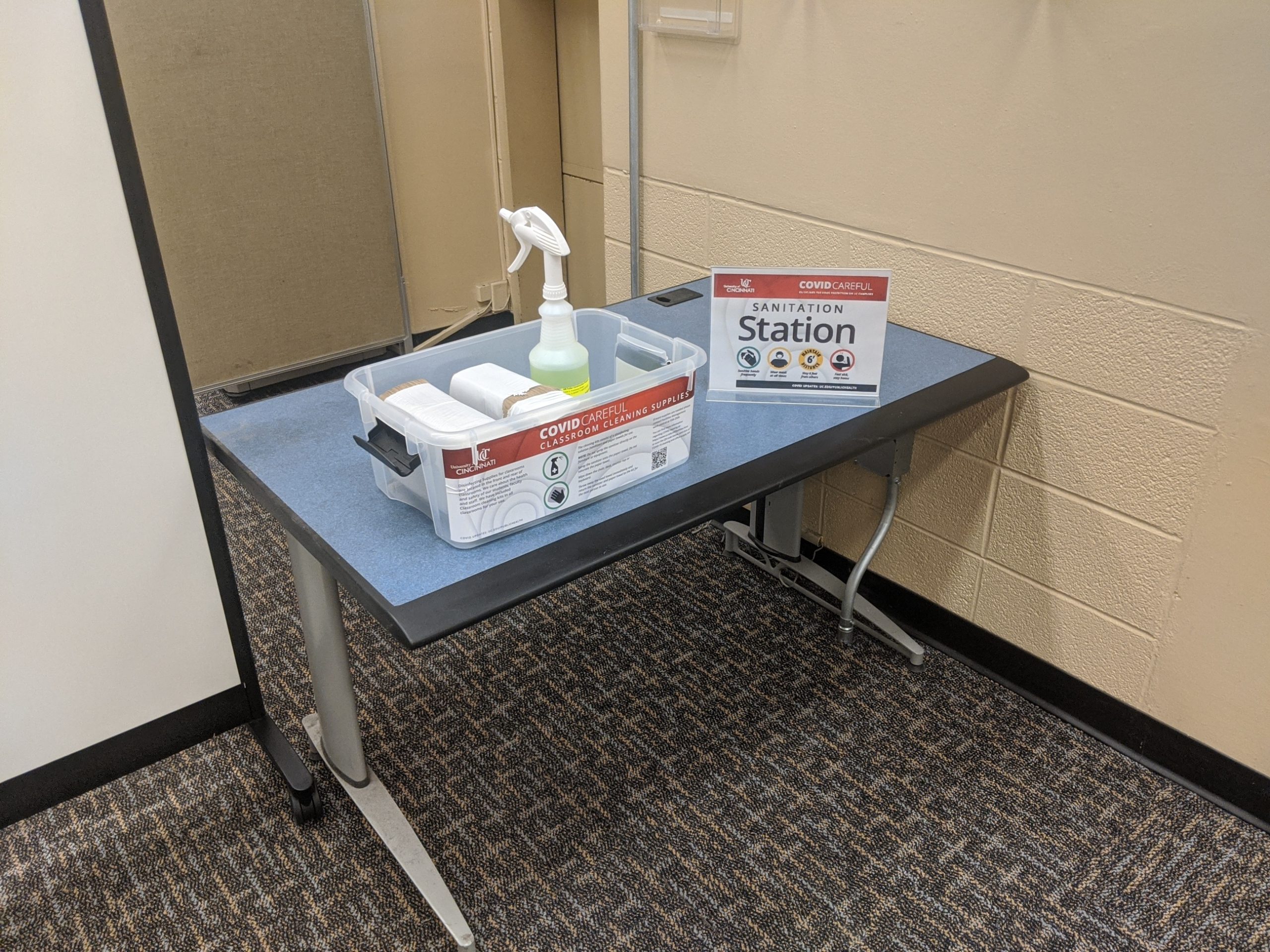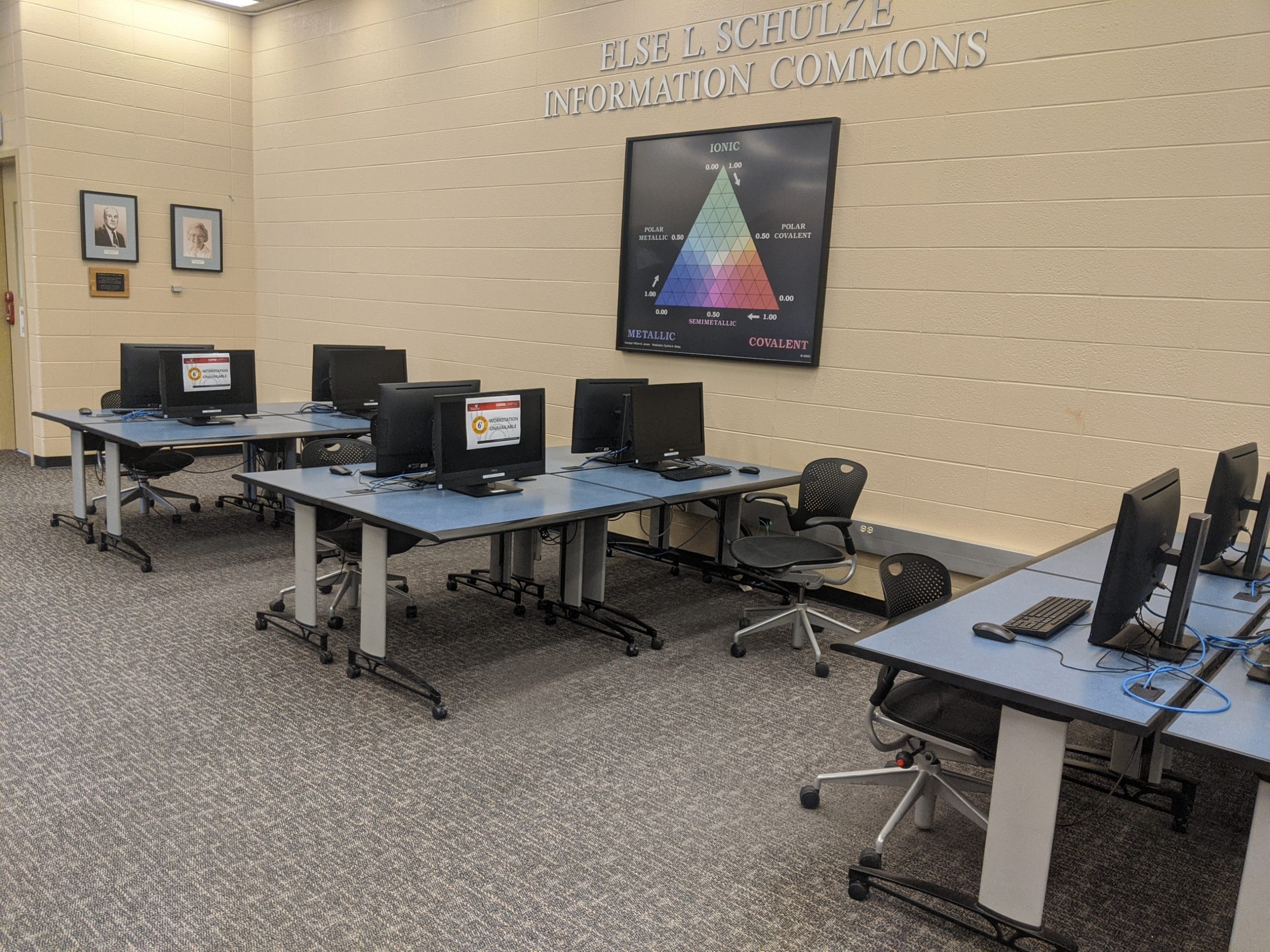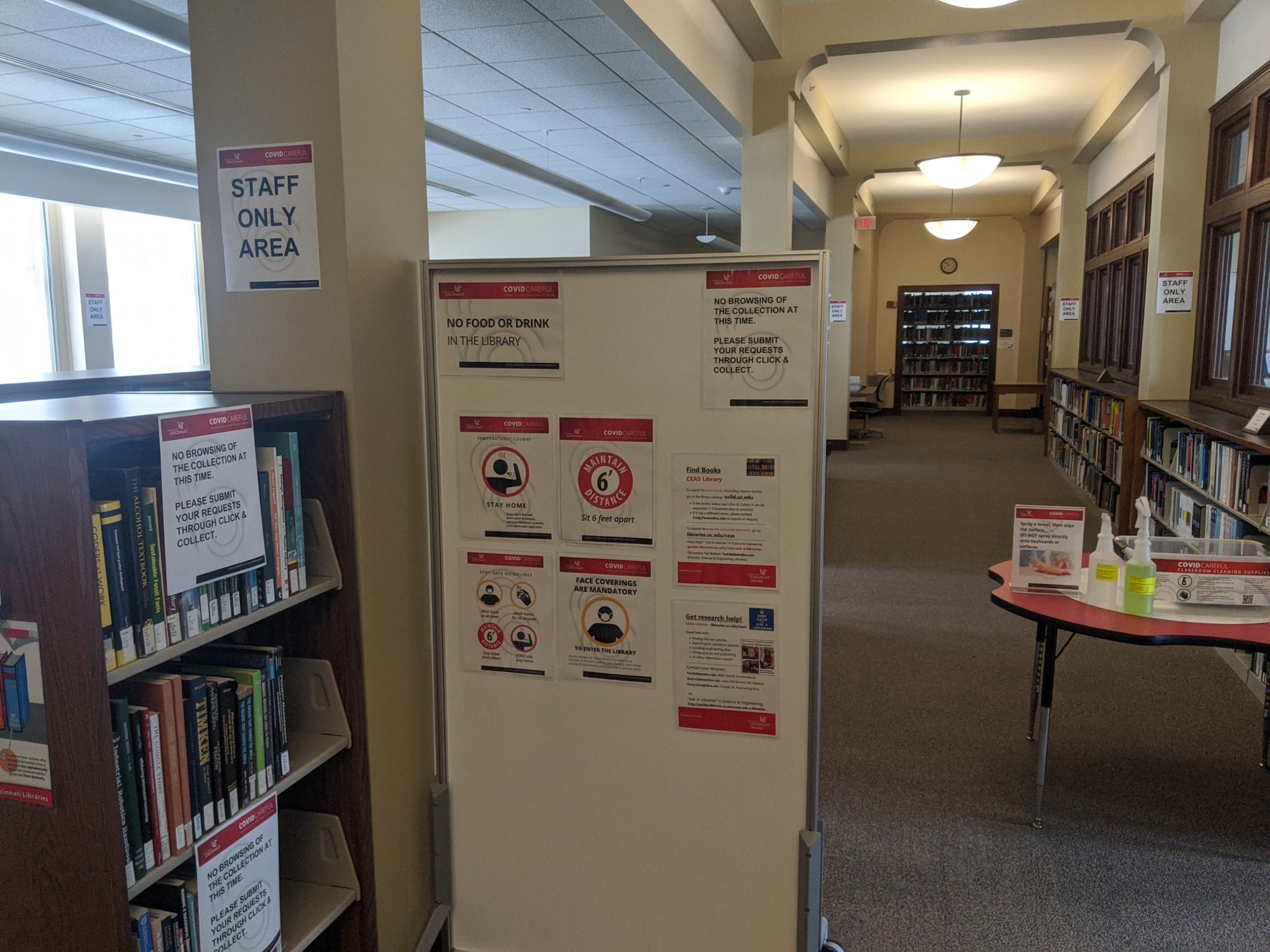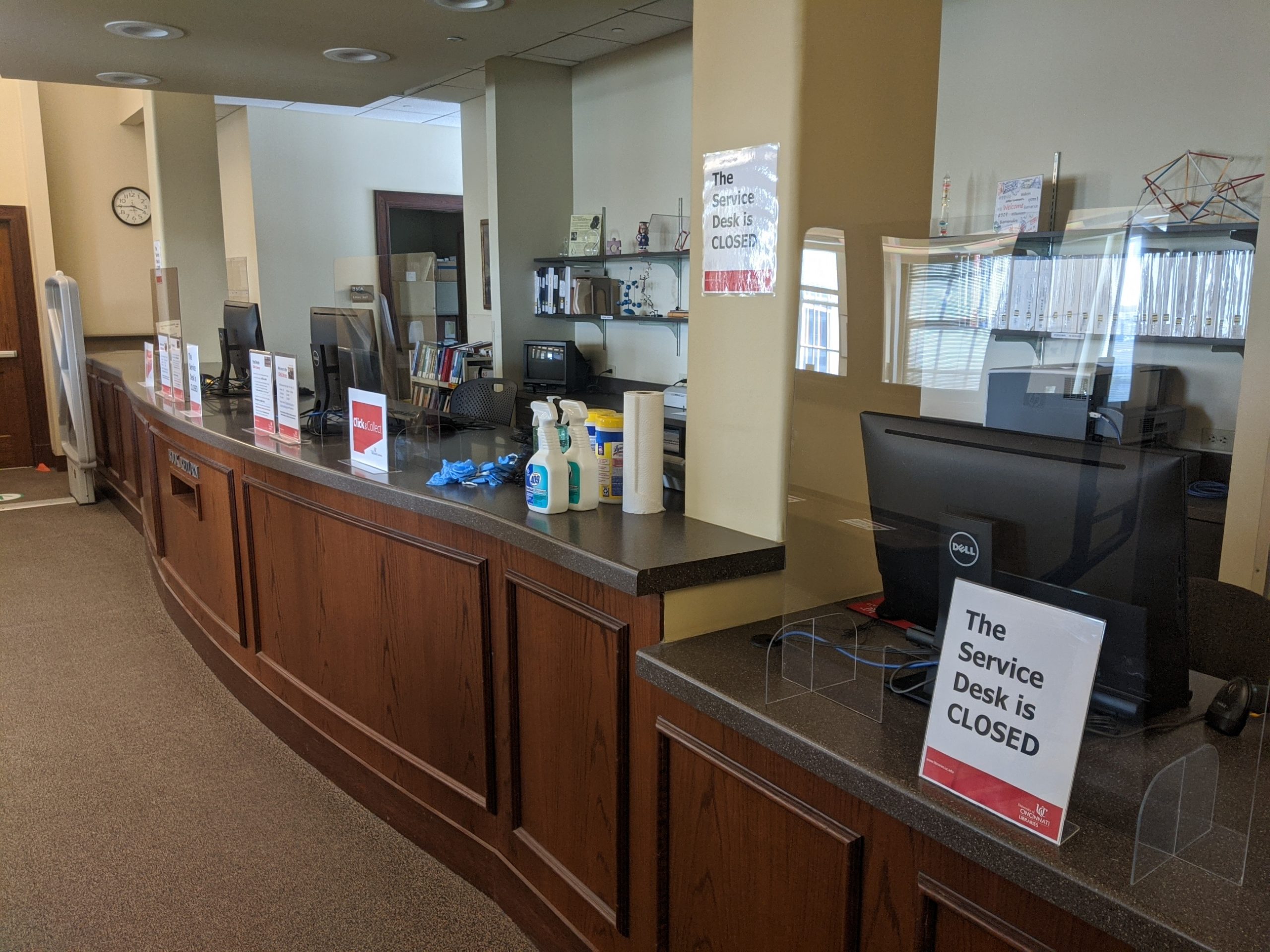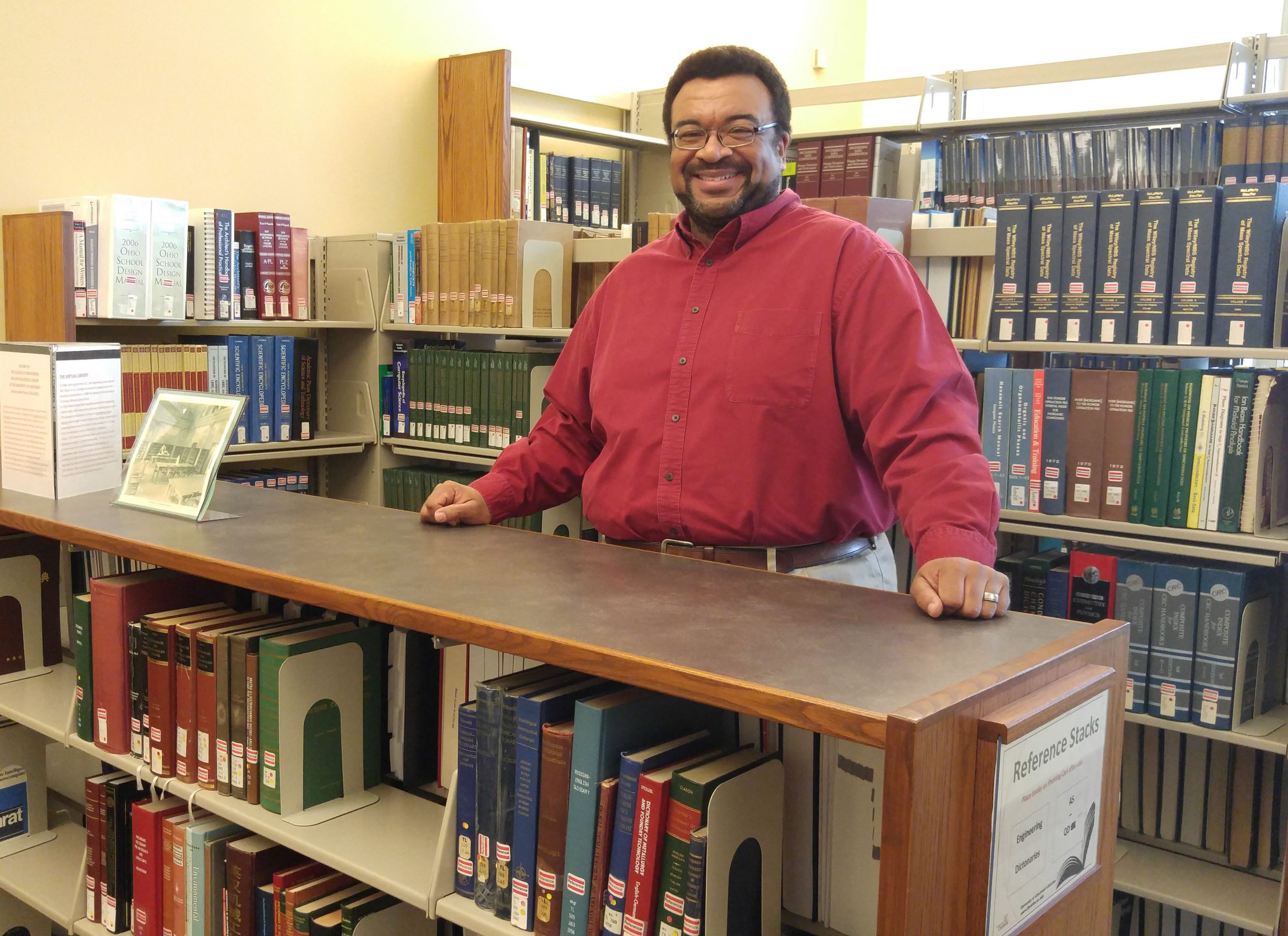
The New Way(s) of Work
With the start of fall semester, UC Libraries re-opened library facilities to the UC community in a limited, phased approach to ensure social distancing. The priority remains to provide access to library resources to the extent possible while maintaining the health and safety of students, faculty and staff.
At this time, all library locations but one are open; however, use and access looks very different from past semesters. With limited exceptions, there is no browsing of library materials in the stacks. The Click & Collect retrieval and pickup service, which allows users to request print library materials in the Library Catalog for pickup at designated locations, has been a well-used service. With the re-opening of the Langsam Dock and mail and library deliveries resuming, library users can once again request OhioLINK and Interlibrary Loan materials.
On-Site Work
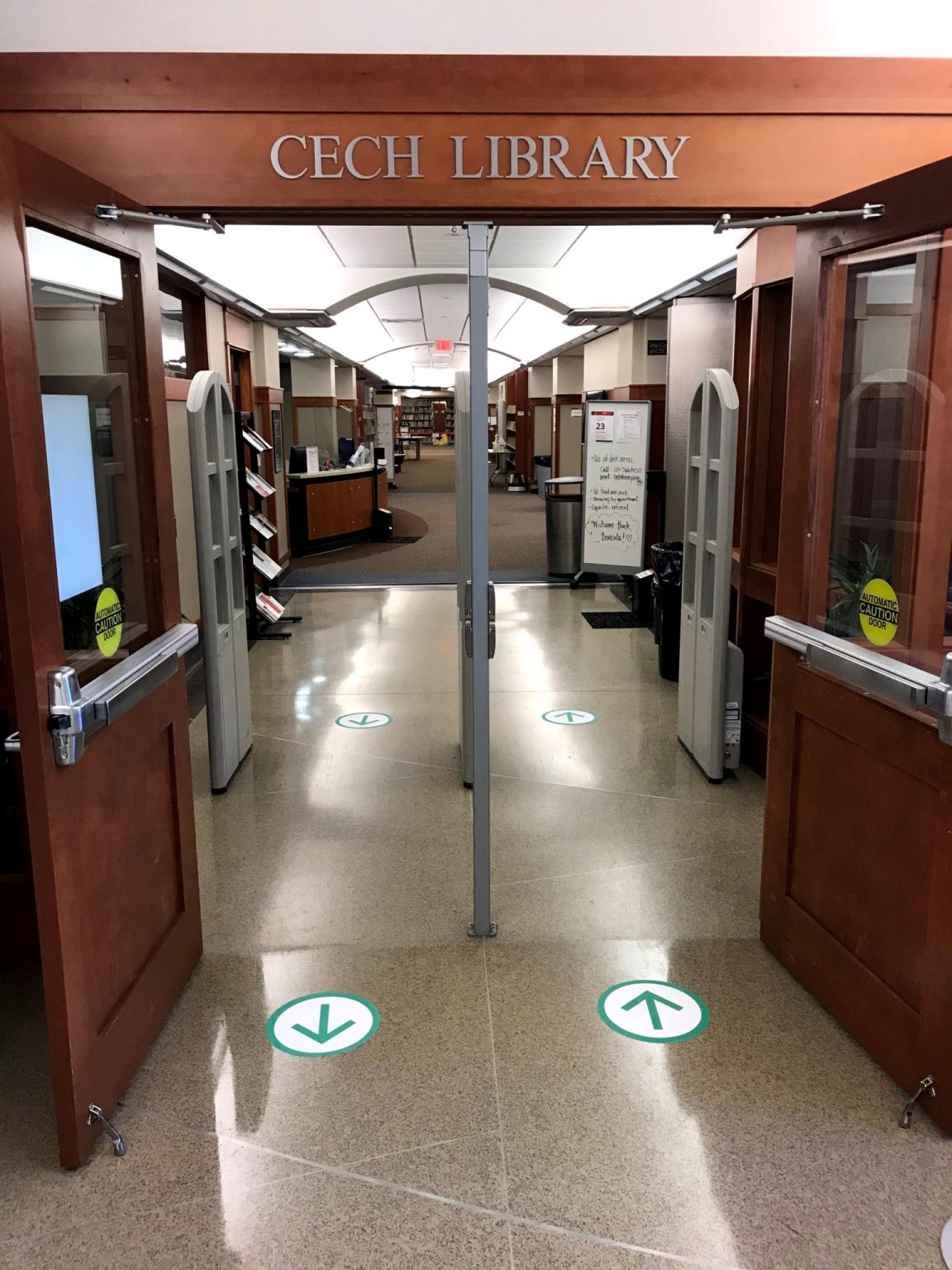
To keep the facilities open and available to users takes a dedicated staff working in the library. Beginning this summer, people filling public service, technical, collections and content services, Library IT, facilities and preservation roles began returning to the facilities in a coordinated manner to work on-site in some capacity. While overall their experiences have been positive, it was at first somewhat nerve-wracking to return, and is not without challenges as things are vastly different than pre-Covid days. Simple tasks such as retrieving books from the stacks is now a multi-step process that must be done in a particular order to ensure safety. With so few coworkers on-site at the same time, the multitude of duties needing attention can be overwhelming at times. The need for frequent hand washing and constant diligence to remain 6’ away from coworkers can be taxing and exhausting. Despite the added stressors that working on-site during a pandemic creates, however, those interviewed for this article overall agreed that not only do they feel more at ease because of the numerous safe guards and protocols the Libraries have enacted, but they enjoy working back in the library.
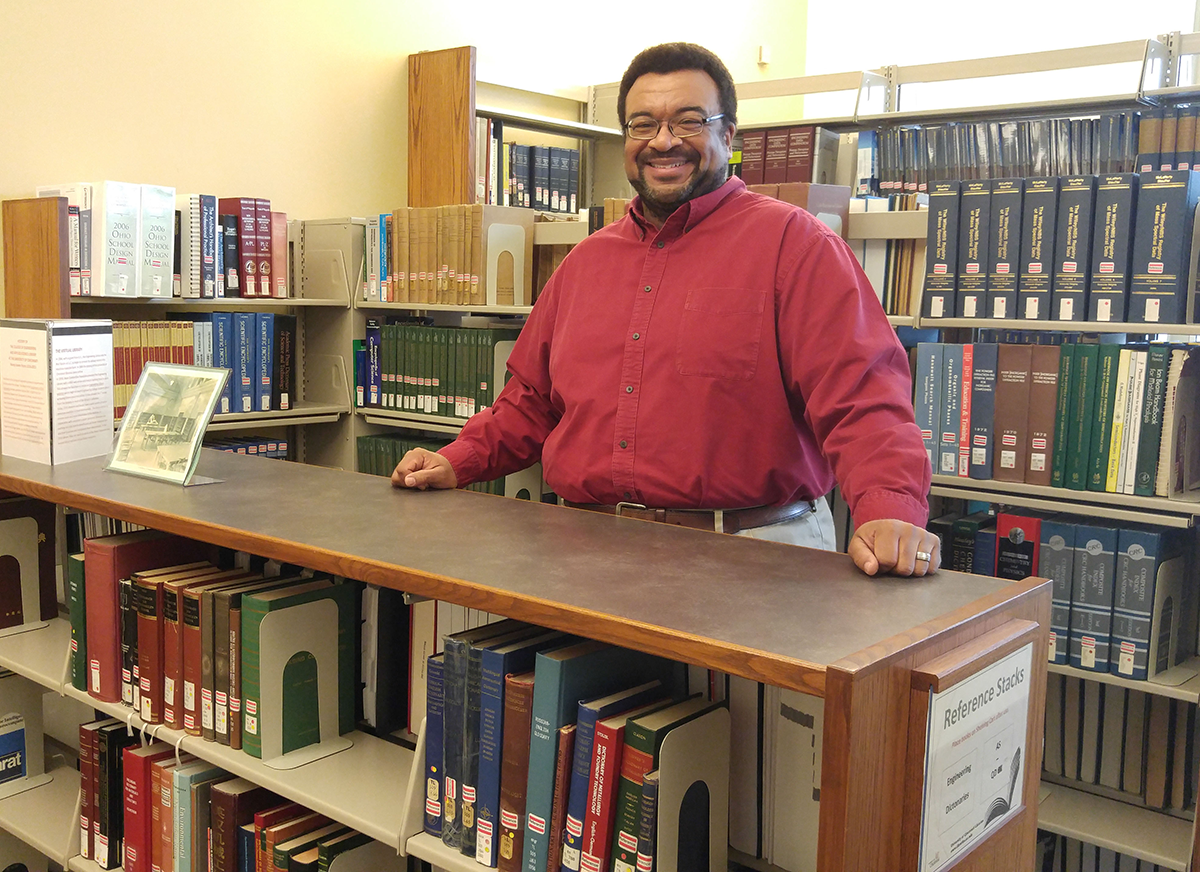
Craig Person, operations manager in the Science and Engineering Libraries, commented that while he felt he was productive while working from home in the spring, he missed the ritual of getting ready and going to work. It is the routine of leaving his home and going to work that helps to put him in a work frame of mind. He also stressed that while he is careful to practice social distancing, and there are far fewer students in the library, he values the opportunity to assist those users on-site in a spontaneous, personal way that he felt was lacking when he was working remotely.
Previously, those entering the Walter C. Langsam Library were often greeted by Michael Alfieri, user engagement manager and student supervisor in the Research, Teaching and Services Department, who could be found working behind The Desk@Langsam always ready to give a friendly hello or answer any question. While he is working on-site half-days, five days a week, reference help and questions are now answered primarily through CHAT, the Libraries online reference service staffed with librarians, staff and student workers. Although he misses the personal interaction with users at the desk, he feels that CHAT provides quality interaction with users in a safe way and in a manner that people are familiar with. Users are appreciative that they are interacting with a person and not simply referencing a knowledge base. In addition, working on CHAT has given librarians and staff who normally do not answer reference questions the opportunity to participate in the service, which has created a new work community that those participating value. Michael does, however, continue to walk the floors of Langsam Library several times during his four-hour daily shifts – a practice he did pre-Covid, but one he does now to ensure that users are following safety protocols and that the spaces do not exceed capacity.
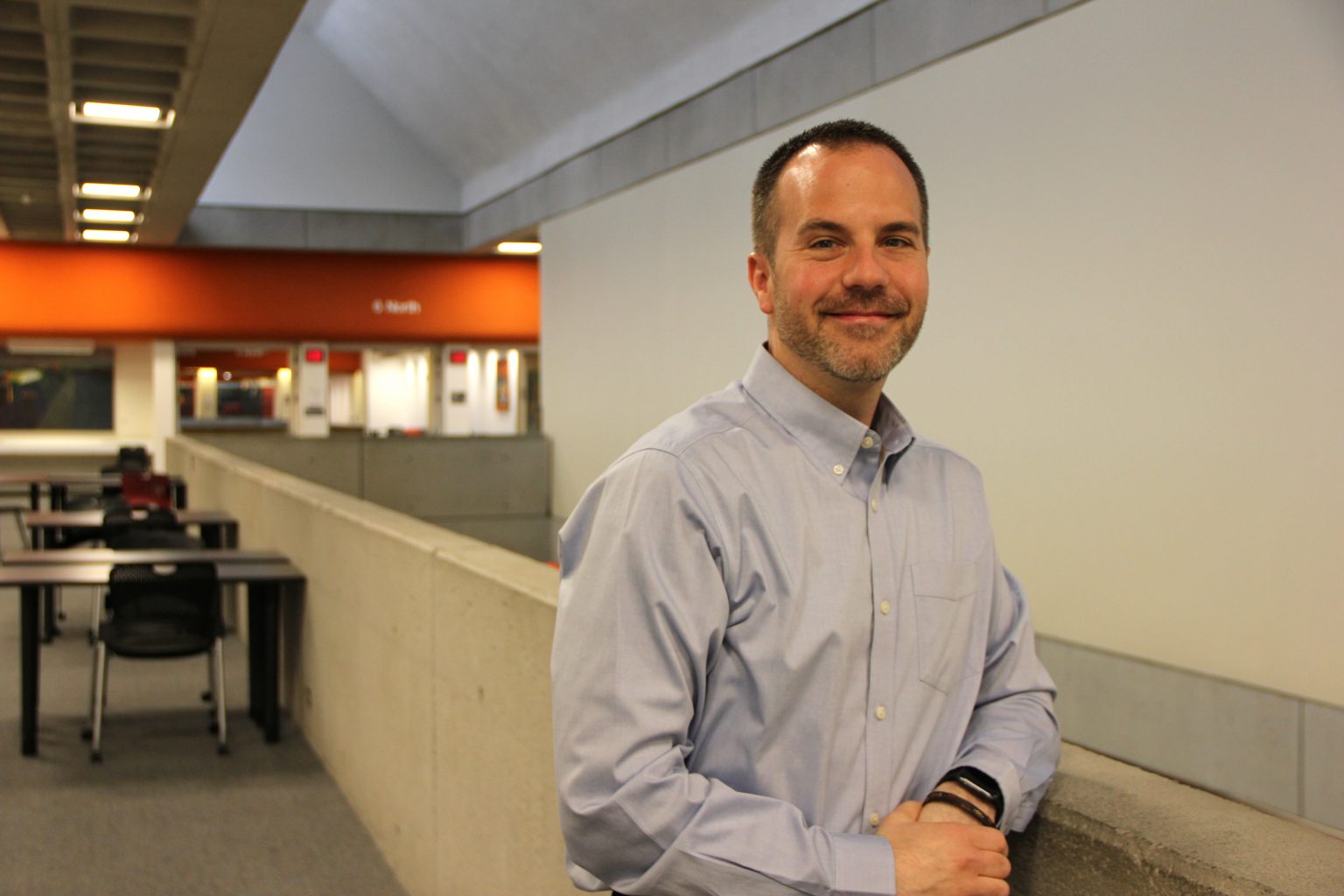
Both Craig and Michael said that campus is quiet overall and feels more like summer than the usual busyness and energy found during fall. And although those who had frequented the libraries in the past aren’t necessarily visiting now, both said that those who are using the libraries in person are for the most part doing it safely and seem to value a place to study or work quietly between classes.
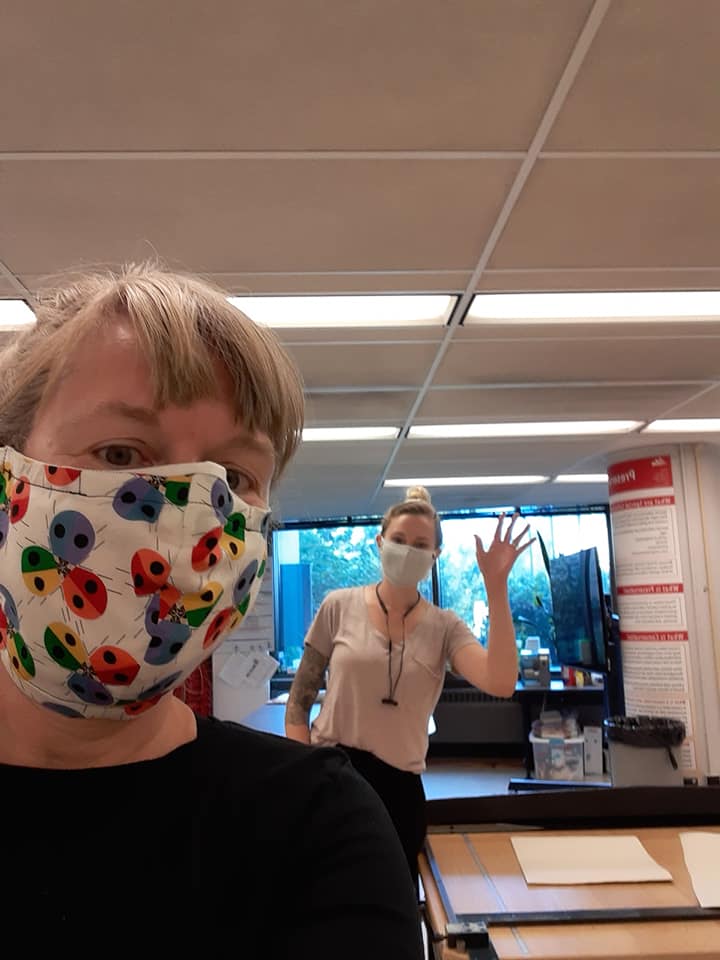
For the Preservation Lab, working on-site is crucial as they are a production lab caring for the collections of the Cincinnati and Hamilton County Public Library and University of Cincinnati Libraries. After closing the lab in March when Ohio went into quarantine, lab staff used the time working remotely to research, hone their skills, make models to be used in classes and to attend online workshops and training. This summer, as soon as safety protocols were put into place, cohorts of two returned daily to the lab to work three-and-a-half-hour shifts. They use this time to work on special collection items and to prepare general circulating collection materials to be worked on back at their homes. Holly Prochaska, preservation librarian, looks forward to the day when the entire preservation staff can be back together, safely, in the lab. Because of their team working model, the synergies and collaborations of them all working together on-site is lost when it is only cohorts of two. And while the lab has begun to receive materials from the Public Library to work on and UC Libraries deliveries will resume soon, Holly is concerned about the backlog of special collection materials that has resulted from this situation.
Craig, Michael and Holly, along with others throughout the Libraries, all have brought student workers back to their areas and feel that that is an advantage of working on-site. Library student workers follow the same safety protocols as other library workers and their supervisors are careful in scheduling so that not too many students are working at the same time so as to allow for social distancing. Student workers contribute to important functions of the Libraries such as retrieving materials for Click & Collect, manning the CHAT reference service, conserving library collections, cleaning library spaces and more, and their presence on-site is welcomed and appreciated.
Even 6’ apart and behind masks, those working on-site stated that the opportunity to see and interact with colleagues is one of the major perks of returning to work on campus. This is something that those working remotely have stated that they miss most – the camaraderie of working with and seeing coworkers in person.
Remote Work
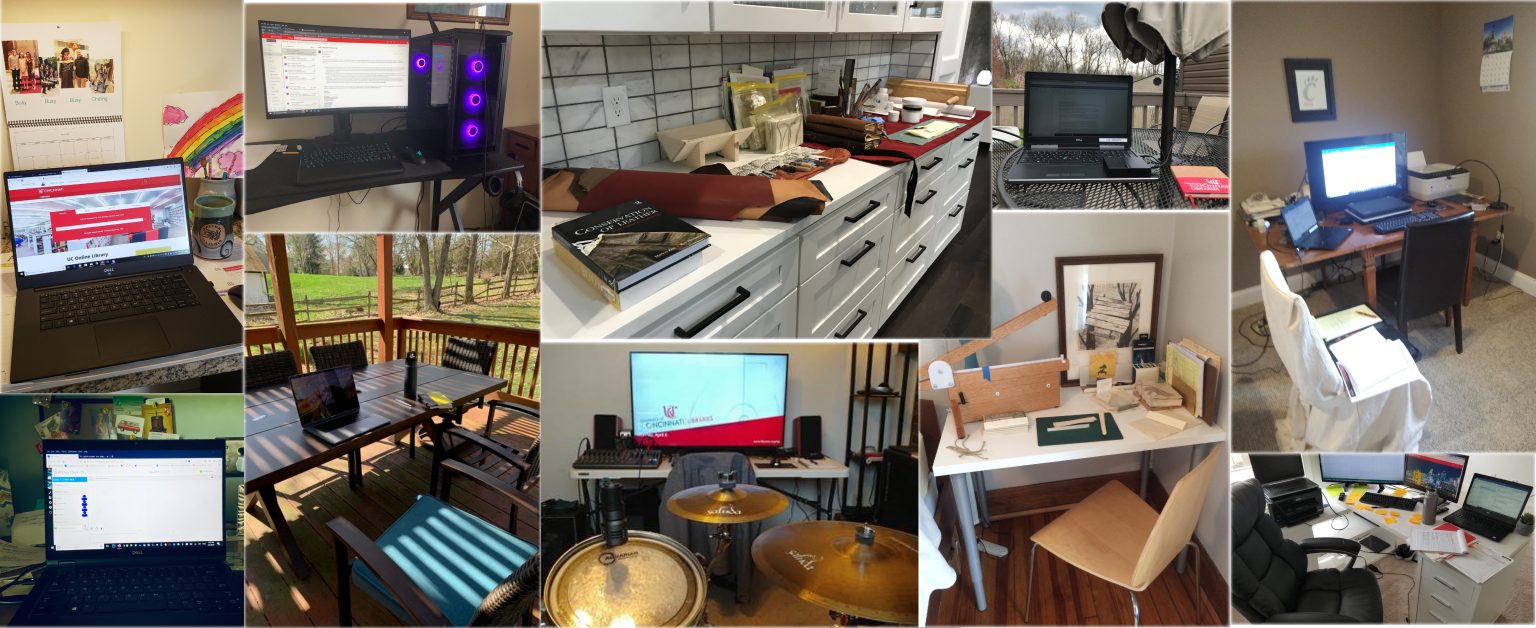
Even with library facilities open, and with approximately 75% of UC’s classes online, UC Libraries remains open and available online to provide users with access to library resources and services. The majority of librarians and staff continue to work remotely so that they can meet users where they are, which is online, but also to make room for colleagues who must work on-site. From library liaisons and reference to web and applications development to library communications, HR and accounting, library personnel continue to work remotely to advance the mission of the Libraries.
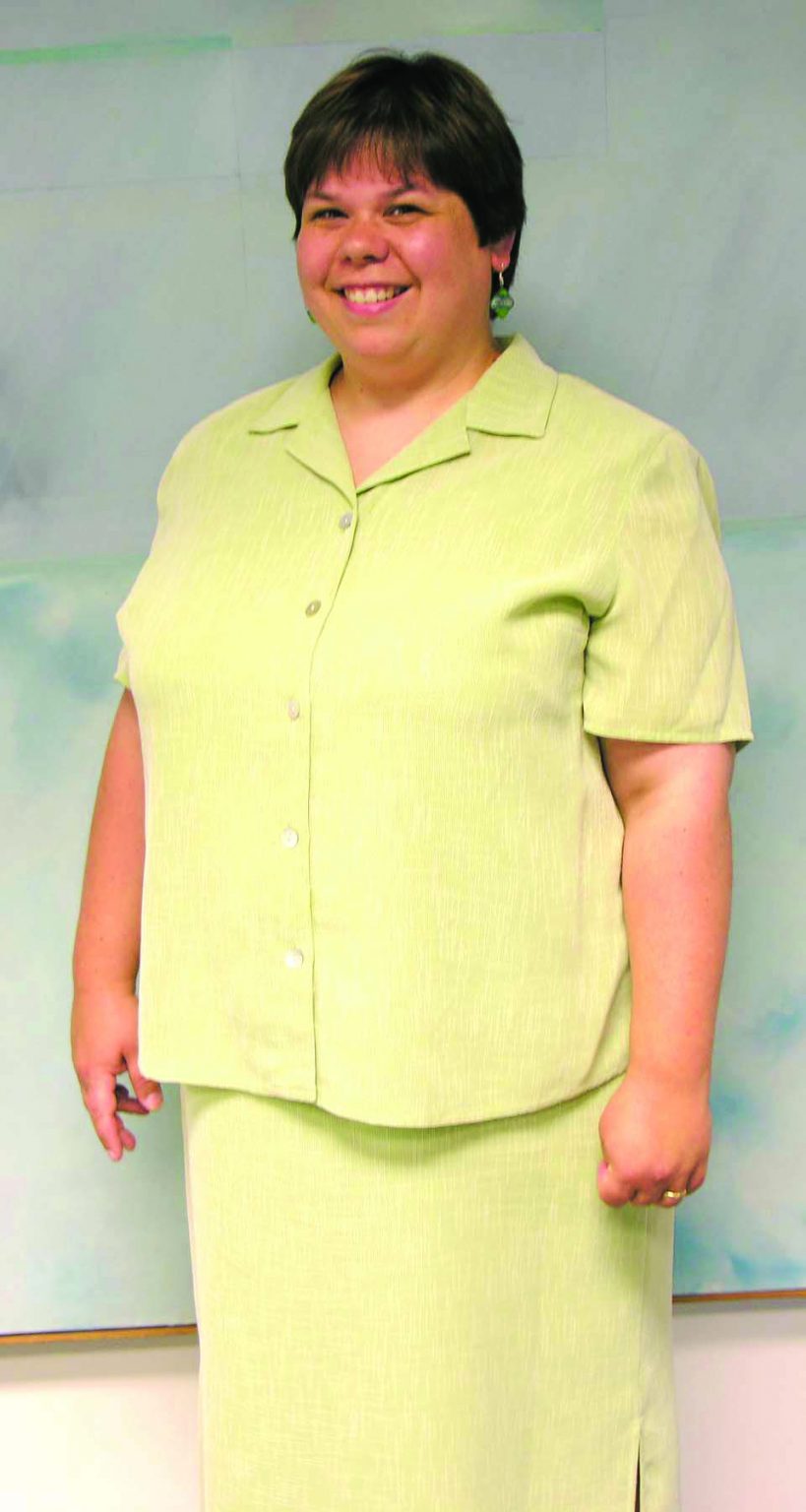
One challenge remote workers everywhere face is the ability to separate home life from work life. When your living room is also your home office, how do you turn off work at the end of the day? How do you protect your vital downtime when it is assumed that you are always at home ready to answer any question or complete a task? How do you mitigate home disruptions whether it be the phone ringing, children being loud or dogs barking? One solution is to create designated work and home spaces and to continue to follow traditional work times. Holly used the spring work-from-home time to update her home studio and office space, purchasing some equipment that she’d been wanting. For others, still dressing the part of work versus off times helps to create this differentiation between the two. When the Libraries closed suddenly in the spring, Debbie Tenofsky, head of the Research, Teaching and Services Department, made sure to still dress in her usual work attire (shown in this photo taken before the shut-down) so as to give herself the sense of working on-site – a practice she abandoned in the summer with hotter weather and once she felt work had settled into a new routine.
Where possible and when it makes sense, services once done on-site have been moved primarily online. Library instruction, for example, has moved completely online through LibGuides and other platforms. For Debbie, her work helping people, answering questions and creating library instruction content has not really changed – just where she does her work. While most of her work can be done remotely, there are times that going into the office is crucial. This summer it was necessary for her to return to Langsam Library so that she could help make decisions on how to move some collections and set up the space to allow for social distancing for when the library re-opened in the fall.

As assistant director of the Research & Data Services (RDS) Department Amy Koshoffer’s work also has not changed much since transitioning to working remotely, but has expanded. Because the RDS department is spread across libraries and campuses, they were accustomed to meeting and collaborating online. Amy pointed out that previously when meetings were held with some on-site and some virtually, she felt that the experience for those meeting virtually was less than those in the same room. Now, with everyone meeting virtually, the experience has equalized. The workshops and events RDS holds have all shifted online and their requests for data management plans have increased as researchers are dedicating more time to research and technical work. In addition, the move to virtual workshops and events has provided the opportunity to expand to include other people and groups statewide as there is no need for travel, freeing up both funds and time to participate in new ways. Amy has enjoyed the opportunity to work with new research groups and to explore and adapt new technological platforms. She hopes that with most work being doing online that accessibility becomes even more a priority for all groups developing content and applications for the web.
Although her day-to-day work has not been negatively impacted working online, Amy misses the randomness of interactions and interpersonal connections working on-site provides. She misses the daily conversations and exchanges she would have with colleagues and the opportunity to network while traveling to and from in-person meetings.
This is a sentiment echoed by others working remotely. While Debbie feels that the camaraderie of her department has remained, she misses the personal contact and interpersonal connections working on-site provides. She has found ways to check in regularly with the librarians and staff in her department. They have standing Teams meetings and she checks in daily with those staff members working on site. The RDS department has a matrix organizational relationship with the Collection Development Services Department. The five managers of those two departments communicate regularly to co-manage the work of both areas so that they continue to work in tandem.
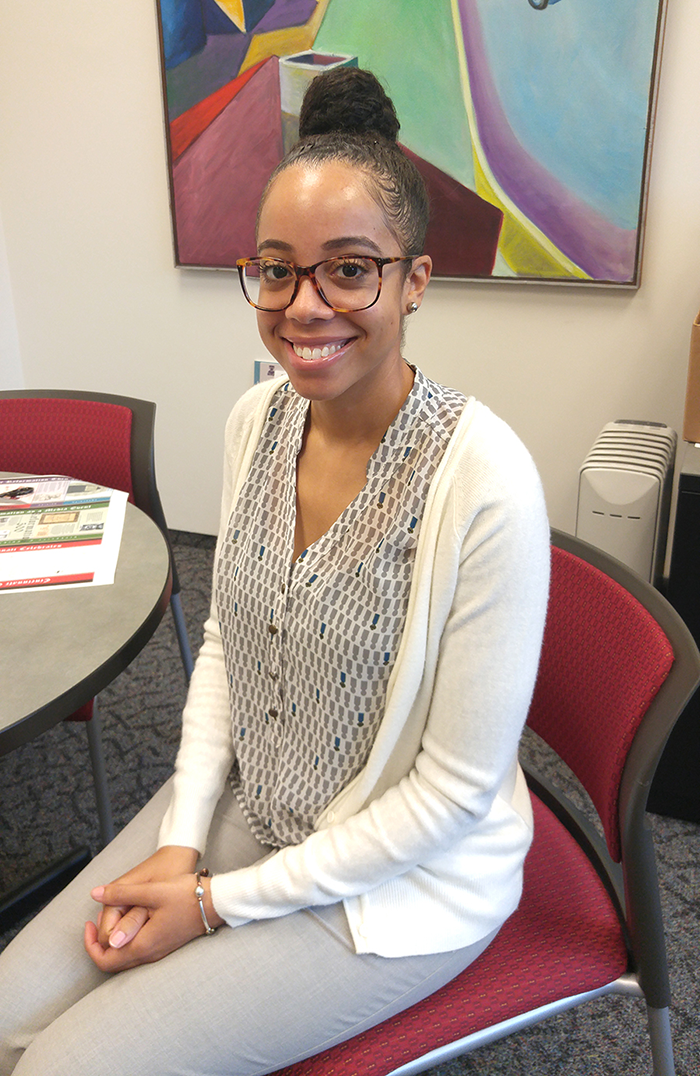
Working in human resources, Aja Hickman, senior HR coordinator, feels that those interpersonal and casual interactions she would previously have had on-site were key to supporting the welfare and morale of her fellow colleagues. Prior to working remotely, Aja enjoyed working with colleagues on search committees and the various opportunities to casually touch base and check in with her fellow staff members. Now that all job searches are on hold or canceled, and she no longer can walk about the libraries to see her coworkers, she schedules one-on-one online lunches so that she can keep that personal connection strong with her coworkers. She did say, however, that at times she finds working at home less stressful as she feels comfortable working in her personal space. She can perform her HR job functions such as payroll and processing leave requests just as easily “from her couch” as she could in the office. Living alone, however, Aja misses background noise working on-site provided, so she will turn on documentaries or cooking shows to create the illusion of working with people around.
Both those working on site and remotely commented on how technology and the Libraries use of Microsoft Teams has proven invaluable in not just performing daily work functions, but in keeping in touch and collaborating with fellow colleagues – whether for departmental, library wide or individual meetings, but also for informal meetups colleague-to-colleague. Since the first week of the campus shutting down in March, the Preservation Lab began a weekly chat where they would check in, show what they were working on and share any new skills or techniques they were developing. Now that the majority of the department has returned to working on-site part of the week, these meetings are transitioning to more formal departmental meetings with an agenda and regular departmental business; however, those interpersonal check-ins will continue.
Universally, both those working on-site and remotely said how well they felt UC Libraries pivoted first in the spring to working remotely and then to planning strategically and carefully to re-open facilities for the fall. They noted the collaborative, flexible and innovative way in which everyone in UC Libraries came together to find new ways to provide library services and resources. The various task forces and groups formed to shut down library facilities, create new online services and to review and make recommendations on the Libraries budget, provided multiple opportunities for people throughout the organization to step out of their usual day-to-day job function to contribute to the Libraries in new and meaningful ways.
Working in a hybrid model with some on-site and some remote has forced collaborations and reliance on coworkers even more so than in the past. Several people noted how accommodating and supportive their library colleagues have been – willing to step up in new ways. This spirit that we’re all in this together and the ability to rise to the occasion is one they hope continues even when work returns to whatever normal will be. The Libraries as a whole has grown from this experience. We responded in a positive and proactive way. We stretched ourselves in ways we didn’t know we could. As for the future of work, numerous people expressed the hope that the flexibility and willingness to change exemplified in the spring when we were forced to transition to remote and online work is a mindset we continue into the future. That after going through this unexpected experience of being forced to make immediate decisions, that we continue to be supportive, creative and innovative regardless of where or how we work.
______________________________
Images from some of the re-opened library facilities…

